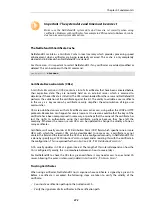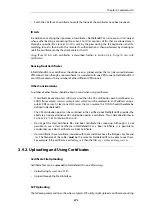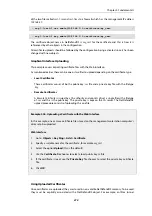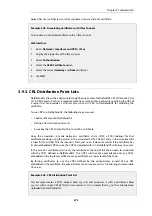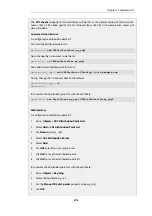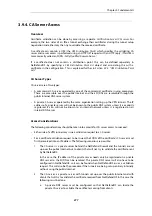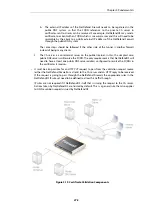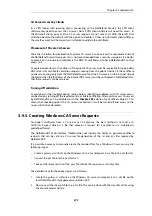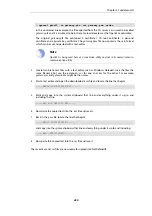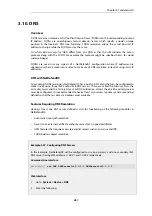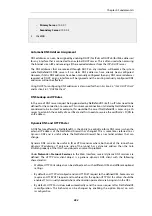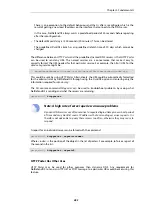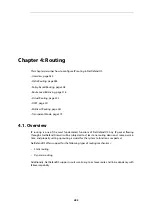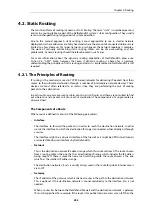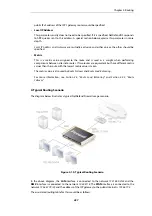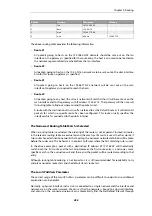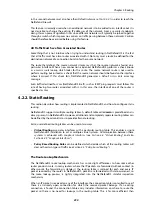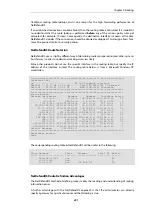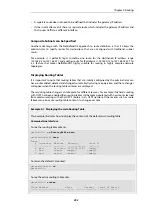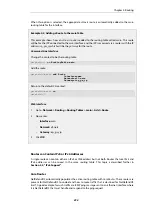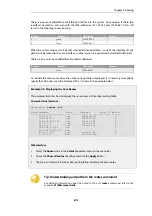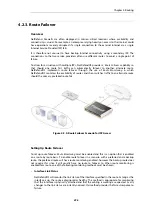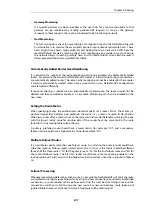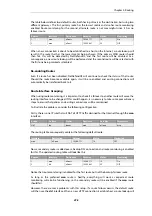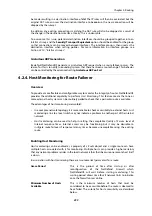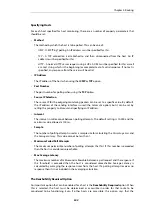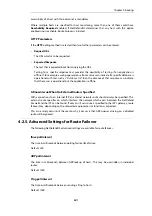
4.2. Static Routing
The most basic form of routing is known as
Static Routing
. The term "
static
" is used because most
entries in a routing table are part of the NetDefendOS system's static configuration. They usually
remain unchanged during long periods of system operation.
Due to this manual approach, static routing is most appropriate to use in smaller network
deployments where addresses are fairly fixed and where the amount of connected networks are
limited to a few. However, for larger networks, or whenever the network topology is complex,
the work of manually maintaining static routing tables can be time-consuming and also
problematic. Dynamic routing should therefore be used in such cases.
For more information about the dynamic routing capabilities of NetDefendOS, please see
. Note, however, that even if dynamic routing is chosen for a network,
understanding the principles of static routing and how it is implemented in NetDefendOS is still
required.
4.2.1. The Principles of Routing
IP routing is the mechanism used in TCP/IP based networks for delivering IP packets from their
source to their ultimate destination through a number of intermediary network devices. These
devices are most often referred to as
routers
since they are performing the task of routing
packets to their destination.
In each router, one or more
routing tables
contain a list of
routes
and these are consulted to find
out where to send a packet so it can reach its destination. The components of a single route are
discussed next.
The Components of a Route
When a route is defined it consists of the following parameters:
•
Interface
The interface to forward the packet on in order to reach the destination network. In other
words, the interface to which the destination IP range is connected, either directly or through
a router.
The interface might be a physical interface of the firewall or it might be VPN tunnel (tunnels
are treated like physical interfaces by NetDefendOS).
•
Network
This is the destination network IP address range which this route will reach. The route chosen
from a routing table is the one that has a destination IP range which includes the IP address
being sought. If there is more than one such matching route, the route chosen is the one
which has the smallest IP address range.
The destination network
all-nets
is usually always used in the route for public Internet access
via an ISP.
•
Gateway
The IP address of the
gateway
which is the next router in the path to the destination network.
This is optional. If the destination network is connected directly to the interface, this is not
needed.
When a router lies between the NetDefend Firewall and the destination network, a gateway
IP must be specified. For example, if the route is for public Internet access via an ISP then the
Chapter 4: Routing
286
Summary of Contents for NetDefendOS
Page 30: ...Figure 1 3 Packet Flow Schematic Part III Chapter 1 NetDefendOS Overview 30 ...
Page 32: ...Chapter 1 NetDefendOS Overview 32 ...
Page 144: ...Chapter 2 Management and Maintenance 144 ...
Page 284: ...Chapter 3 Fundamentals 284 ...
Page 392: ...Chapter 4 Routing 392 ...
Page 419: ... Host 2001 DB8 1 MAC 00 90 12 13 14 15 5 Click OK Chapter 5 DHCP Services 419 ...
Page 420: ...Chapter 5 DHCP Services 420 ...
Page 573: ...Chapter 6 Security Mechanisms 573 ...
Page 607: ...Chapter 7 Address Translation 607 ...
Page 666: ...Chapter 8 User Authentication 666 ...
Page 775: ...Chapter 9 VPN 775 ...
Page 819: ...Chapter 10 Traffic Management 819 ...
Page 842: ...Chapter 11 High Availability 842 ...
Page 866: ...Default Enabled Chapter 13 Advanced Settings 866 ...
Page 879: ...Chapter 13 Advanced Settings 879 ...

